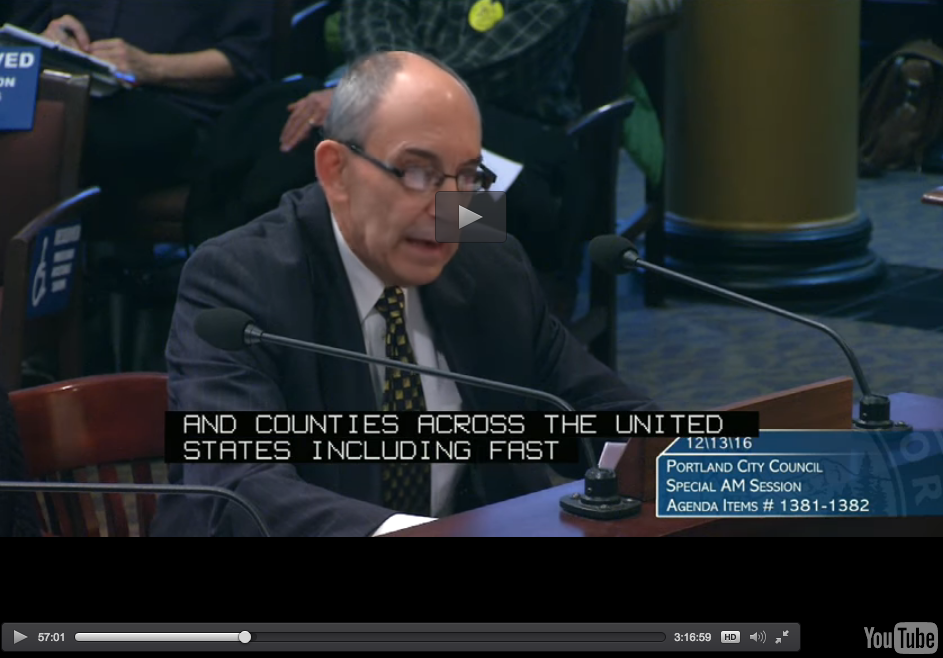Minneapolis is considering inclusionary zoning (IZ), but has qualms based on Portland’s experience. Ironically, a non-existent Minneapolis IZ program was a key part of the argument for adopting Portland’s IZ law in December 2016.
Parts of this commentary are going to seem like a major-league distortion in the space-time continuum, so let’s start with a simple fact: the City of Minneapolis doesn’t have an inclusionary housing requirement–it never has.
Regular readers of City Observatory will know inclusionary housing requirements are a favored policy of many housing advocates: when developers build new housing, they ought to be required to set-aside some portion of the units–say 10 or 20 percent–for low or moderate income families. Dozens of cities around the country have adopted some variant of the inclusionary idea.
There’s a terrific story in MinnPost, the Twin Cities on-line public policy journalism enterprise, describing the upcoming deliberations of the Minneapolis City Council, which is considering adopting some version of IZ. According to MinnPost, the decision is very much informed by recent reports on the struggles surrounding Portland’s new IZ program.
In December 2016, Portland’s City Council enacted a citywide inclusionary housing requirement that would that is among the nation’s most stringent: beginning in February 2017, it required all multi-family developments of 20 or more units to set aside 20 percent of newly constructed apartments for families earning no more than 80 percent of the region’s median household income. A new city staff report and several press reports (here and here) suggest that the inclusionary zoning program has brought new apartment proposals in Portland to a near standstill. Wisely, the city leaders of Minneapolis want to understand what’s happening in Portland so they avoid a similar problem if they move forward.
And here’s the irony: back in 2016, advocates for Portland’s IZ program argued specifically that IZ was up and running in Minneapolis, proving that it had few, if any adverse effects. You might call it the policy wonk version of the “all the other kids are doing it,” refrain well known to parents everywhere. For example, in testimony to the Portland City Council on December 13, Professor George Galster assured the city council that inclusionary zoning was a well-established practice, in use widely around the country for more than forty years, concluding:
. . . they are in operation in hundreds of cities and counties across the United States, including fast-growing Portland-sized places like Denver and Minneapolis.
(Portland City Council Video, December 13, 2016 (at 56:30)
In a narrow statistical sense, that statement is mostly true, it simply wrong in the case of both of the cities specifically mentioned: Neither Denver nor Minneapolis had an IZ program in December 2016. Lots of places have adopted something they call “inclusionary zoning” or “inclusionary housing.” But that appellation is applied to a wide range of programs, most of them tiny or toothless. As we’ve reported at City Observatory, there’s less to most inclusionary zoning programs than meets the eye: While impressive sounding on paper (and perhaps in the press) they tend to produce very few units of new housing, typically due to the limited scope and discretionary application.
And in the case of Denver and Minneapolis, the two instances specifically cited by Dr. Galster, there’s even less that meets the eye. Minneapolis did not in fact have an inclusionary housing requirement, although it does have a voluntary density bonus for developments that include affordable housing (which no developer has apparently ever used). And, as of September 2016, Denver has repealed its inclusionary housing requirement.
As a legal and policy matter, a wide variety of ordinances and programs clothe themselves in the appealing term “inclusionary housing.” But here especially, the devil is in the details. Even Mayor Bill de Blasio’s vaunted “Mandatory Inclusionary Housing” requirements apply only if developers seek up-zoning.
Here’s why this matters: Advocates are arguing that the experience of all these other places shows that inclusionary requirements have no negative effects on new privately financed housing construction. But if the programs in New York, Chicago, Denver and Minneapolis are so much smaller, are voluntary, have been repealed or simply don’t exist, then they provide no evidence that the program Portland enacted would not greatly reduce new housing construction–and thereby exacerbate the city’s housing shortage, which is what it appears to be doing.
When advocates sweep these substantive policy differences under the rug, and don’t acknowledge the limited scope of real-world inclusionary programs–as well as significant back-sliding from inclusionary zoning, as in Denver, they’re mis-informing policy makers. As we pointed out earlier, the scope of the Portland program is much broader than virtually every other extant inclusionary zoning program and is highly likely to have a devastating effect on new housing construction. Ultimately, details matter, and sweeping claims that elide the great variation in policies that carry the appellation “inclusionary” is misleading; no better than an eight year-old claiming that “all the other kids do”–when in fact they don’t.
Portland didn’t (and of course couldn’t) learn anything from Minneapolis’ non-existent inclusionary zoning program. (It’s not apparent that city leaders even bothered to verify the accuracy of Galster’s claim). Today, though, Minneapolis is fortunate to be in the position to learn from Portland’s mistakes. Thanks to MinnPost for following this story so closely.

